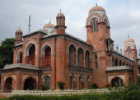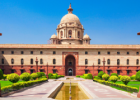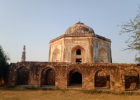M.N. MANIKANDAN, the be-all, and end-all of CIACH began his journey in the field of conservation and restoration in the year 1980. His vast and inspiring experience spanning over 30 years in the field of Painting,Objects of Art, and Monumental Conservation, has been integral in the establishment and growth of CIACH
Sculptures & metal objects
Various forms of Sculptures made from different types of stones or terracotta or other metal sculptures like Bronze, Copper, Iron structures are conserved by the conservators of CIACH lab.
Textiles & Craft
Textile conservation department works on various textile materials including flags, costumes, banners and contemporary fiber art pieces
Paper & manuscripts
Various paper-based materials including watercolours, drawings, illuminated manuscripts, prints etc., are treated and conserved by our conservators. Many archival materials including maps, documents, books are also preserved here.
Craft & Wooden Structures
There are various objects for treatment such as glass, plastic, stone, metal, ceramic and other organic substances like wood, leather, feather and basketry.







